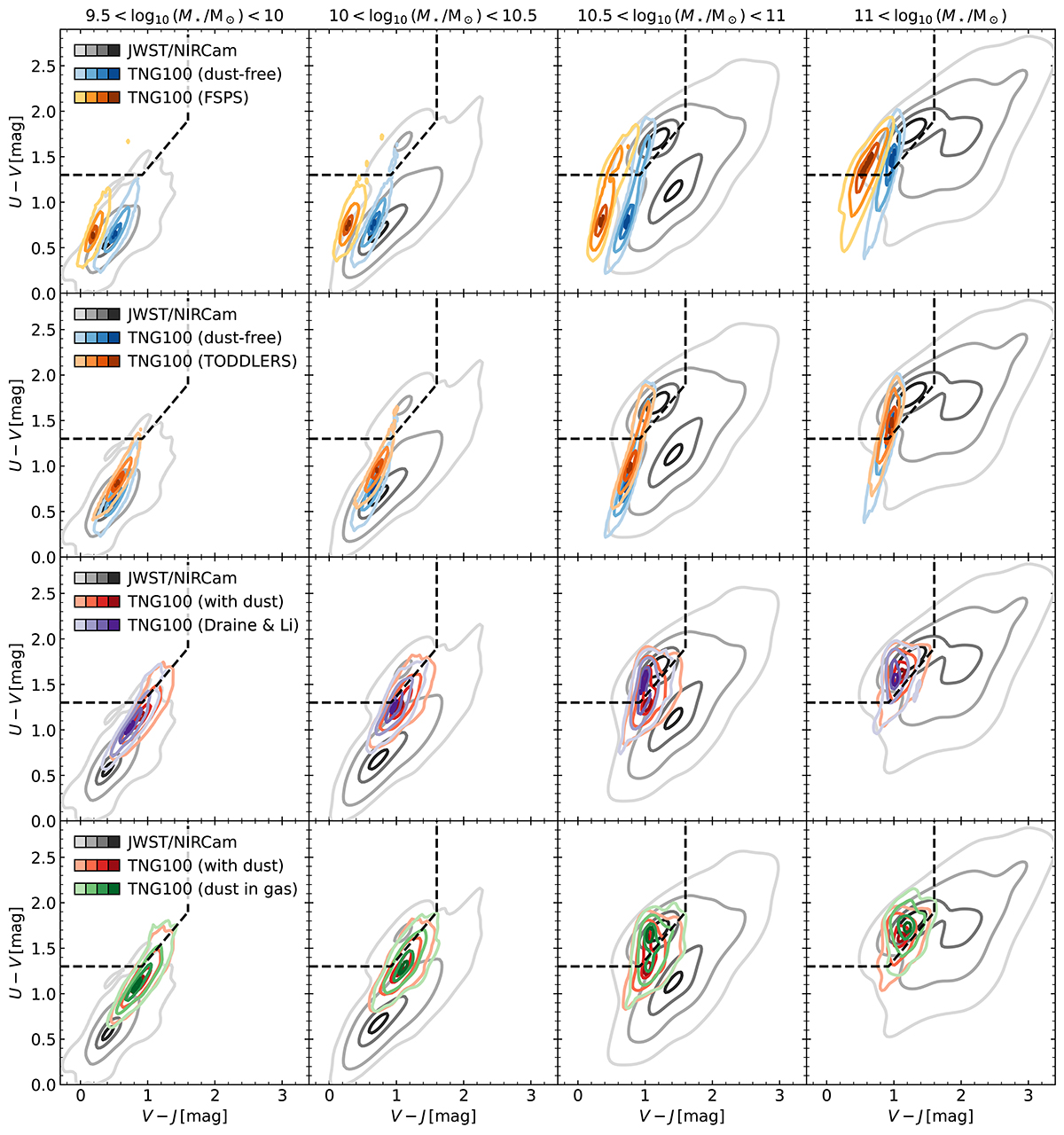Fig. B.1.

Download original image
Impact of variations in our SKIRT post-processing scheme for the TNG100 galaxies. In the upper two rows, the blue contours show our fiducial dust-free TNG100 colors, obtained with the BPASS templates. The orange contours in the first row indicate the UVJ colors obtained when using FSPS-MILES instead of BPASS. In the second row, we add local (unresolved) dust by using the TODDLERS templates for star-forming regions for all stellar populations with ages below 30 Myr (older stellar populations are still modeled with BPASS). The lower two rows show variations in our dust modeling. Our fiducial post-processing scheme with a dust-to-metal ratio of 0.5, the THEMIS dust model, and assigning dust only to ISM gas cells according to the criterion of (Torrey et al. 2012, 2019) is indicated by the red contours. In the third row, we use the dust model from Draine & Li (2007) instead of THEMIS for the diffuse (resolved) dust in the ISM (purple contours). The fourth row shows the UVJ colors obtained when assigning dust to all gas cells that are gravitationally bound to the galaxy (green contours), as opposed to just the ISM gas cells. We find that, except for the choice of stellar population templates (first row), the impact of these SKIRT post-processing variations on the simulated TNG100 colors are generally minor (see main text for more information).
Current usage metrics show cumulative count of Article Views (full-text article views including HTML views, PDF and ePub downloads, according to the available data) and Abstracts Views on Vision4Press platform.
Data correspond to usage on the plateform after 2015. The current usage metrics is available 48-96 hours after online publication and is updated daily on week days.
Initial download of the metrics may take a while.


